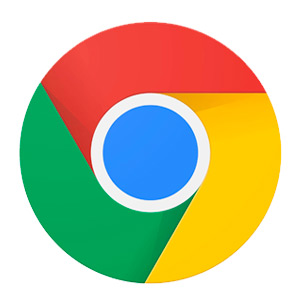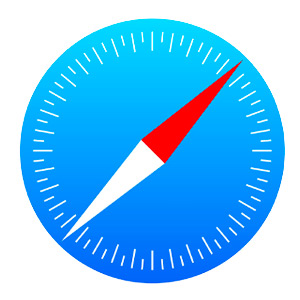Caching is a crucial mechanism in modern computing that significantly enhances user experience by optimizing load times and reducing resource usage. Understanding what cached images and files are, and the role they play can help users appreciate the technology that supports quicker and more efficient websites.
Understanding the Concept of Caching
Caching involves storing copies of files or data in a temporary storage area for faster access in the future. When a user accesses a webpage, the browser may cache images, scripts, or stylesheets, which allows it to retrieve them from the cache instead of downloading them again from the server. This process streamlines data retrieval, improving the overall efficiency of data usage on the internet.
The Role of Caching in Computing
The concept of caching plays an integral role not just in web browsers, but across various computing environments. It enables reduced access time to frequently used data by storing it closer to where it is needed. In essence, caching improves performance on a hardware, software, and network level.
For example, in operating systems, file caches can store frequently opened files, while CPU caches store data that the processor needs to access quickly. This layered approach to caching allows for seamless user experiences in computing across multiple platforms.
How Caching Works
When a user requests a resource, such as a webpage, the request is sent to the server. If the resource hasn’t changed since the last time it was accessed, the server may return the cached version instead of the original file. This is done by checking the cache’s metadata, comparing timestamps, and validating whether the cached item is still current.
Additionally, caching mechanisms utilize different tactics depending on the type of resource and the desired outcomes, such as cache expiration policies that dictate when cached data should be refreshed or discarded.
The Importance of Cached Images and Files
Cached images and files are vital components that contribute significantly to the overall performance of websites. By storing various elements so they don’t need to be downloaded repeatedly, they play a vital role in ensuring seamless browsing experiences.
Speeding Up Load Times
One of the primary advantages of caching is the substantial reduction in load times for web pages. When images and files are cached, the browser can pull them directly from the local cache rather than retrieving them from the remote server. This decreases loading time significantly and enhances user satisfaction.
Studies have shown that users tend to abandon sites that take too long to load, highlighting the need for effective caching strategies to maintain user engagement and retention.
Reducing Server Load
Cached files also reduce the load on web servers. When a significant portion of users’ requests can be served from a cache, it means fewer requests are sent to the server, leading to lower bandwidth consumption and decreased server processing power requirements.
This reduction can be particularly beneficial during peak traffic times, as it allows web servers to maintain performance levels without having to expand their infrastructure or bandwidth significantly.
Different Types of Caching
Caching strategies can vary based on the context in which they are used. Understanding different types of caching can help developers and users alike grasp the mechanics behind quick data retrieval.
Browser Caching
Browser caching is the most common form of caching. When users visit a website, the browser stores resources like images, CSS, and JavaScript files locally on the device. This means that if the user navigates back to the site, these resources can be loaded instantly from the cache.
Web developers can control how long or under what conditions items are cached by using cache-control HTTP headers, which helps manage how effectively browsers cache files.
Proxy Caching
Proxy caching operates at an intermediary level between users and the web servers. A proxy server can store copies of responses and deliver them to users when they make similar requests, effectively reducing the load on the original server while speeding up access for the user.
This type of caching is particularly beneficial for organizations that handle large amounts of requests for similar content.
CDN Caching
Content Delivery Networks (CDNs) utilize caching on a grand scale. By distributing cached content across a network of servers around the globe, CDNs can minimize latency for users geographically far from the original server.
This not only speeds up access for users but also provides an additional layer of security and reliability, ensuring better performance even during high traffic periods.
Cached Images and Files: A Closer Look
To further understand caching, it’s important to distinguish between cached images and cached files, as they serve unique purposes.
What are Cached Images?
Cached images refer specifically to graphic elements that have been stored locally after a web page is visited. They are critical for ensuring visual content loads quickly for repeat visitors, leading to an enhanced browsing experience.
Cached images can take up varying amounts of space depending on their size and format, making it important for browsers to efficiently manage stored images to avoid consuming excessive storage on users’ devices.
What are Cached Files?
Cached files encompass a broader category that includes not only images but also stylesheets, scripts, and other resources that help render a website correctly. These files are essential for operational efficiency, as they encompass the building blocks that contribute to a website’s overall functionality and design.
By effectively caching these elements, websites can maintain speed and performance, while also ensuring a consistent user experience.
The Pros and Cons of Caching
While caching provides numerous benefits, it is not without its challenges. Understanding both sides of caching is important for making informed decisions regarding its implementation.
The Benefits of Cached Images and Files
The primary benefits of cached images and files include improved loading times, reduced bandwidth usage, and a lower burden on server resources, all of which translate to a better user experience. Additionally, proper caching strategies lead to optimized web performance and potentially higher search engine rankings, as page load speed is a factor in SEO.
Potential Drawbacks of Caching
However, crowded caches can result in stale content being served to users, potentially leading to confusion or frustration if updates are not reflected. There is also a risk of cache bloat, where excessive files stored locally can slow down connection speeds or hinder a device’s performance.
In conclusion, while caching presents certain drawbacks, the cumulative benefits make it an invaluable aspect of web and computing technologies that powers today’s digital landscape.





